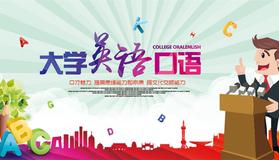-
1 扩展阅读
-
2 章节测验
How to Write a Good Resume
What to Tell Them
Instead of focusing on your job titles, focus on your accomplishments, and make them specific. If you managed a budget, describe how big it was. If you've been published, mention where and how many times. If you won a research grant, tell how you beat out 400 competing proposals. If your work included projects for prominent individuals or brands, name them.
Even if your accomplishments are more modest, you can frame them to catch an employer's eye. Write about your work using action verbs (built, developed, directed, managed, negotiated, etc.), and show what impact you had: sales increased; costs decreased; there were fewer mistakes. Anything that shows your work made a difference should be included.
How to Say It
Most resumes present information in either a chronological or functional format. Some use a combination of the two.
The chronological resume charts your career over time: your current or most recent job, your previous job, the one before that, and so on. Under each job, list your accomplishments and responsibilities. This traditional approach is still popular with conservative employers, and can work well if you've had a long career in one industry.
The functional approach highlights your skills and accomplishments, de-emphasizing information about employers and job titles. Some employers dislike this format because it makes it hard to grasp your career path. It can work well if you're returning to work after a hiatus, are changing careers or have worked in multiple industries.
A combined resume strikes an equal balance between listing job titles and covering skills and accomplishments. The biggest drawback is that it tends to stretch out longer than a functional or chronological resume.
Keep It Short
Even if you have years of experience in your field, your resume needs to be concise. Compressing all your accomplishments into two pages may be a challenge, but a longer resume isn't going to interest employers more. If you're in your 20s, one page should be all you'll need.
Tailor Your Resume
Rewriting your resume for each new potential employer is a lot of work, but it can give you an edge. Check out each employer's website: see how they describe their staff and accomplishments. Write your resume so it has the same feel, dropping some of the same buzzwords. For instance, if their website or press releases talk about how innovative they are, include examples of innovation in your resume. What they value is more important than what you value.


